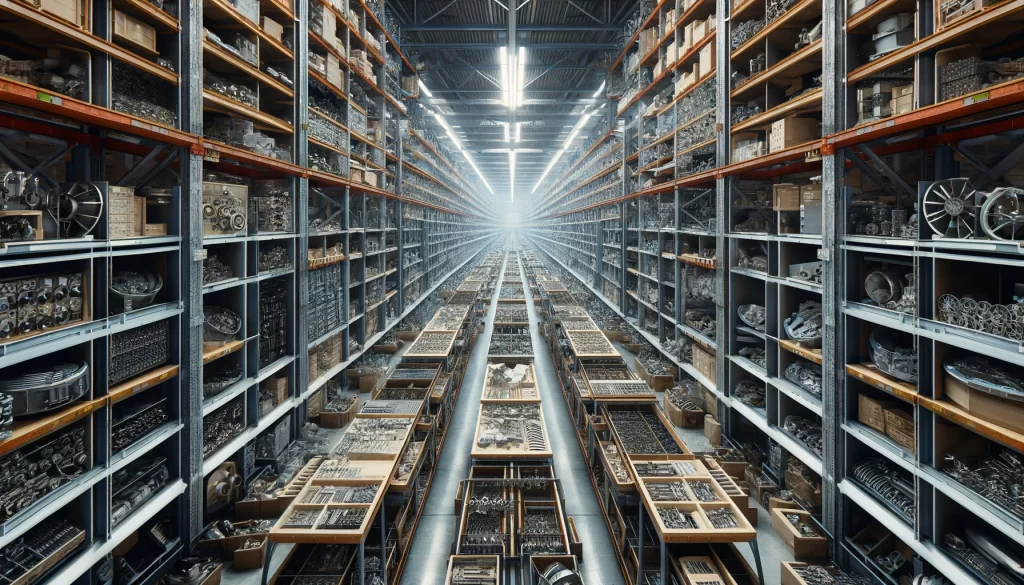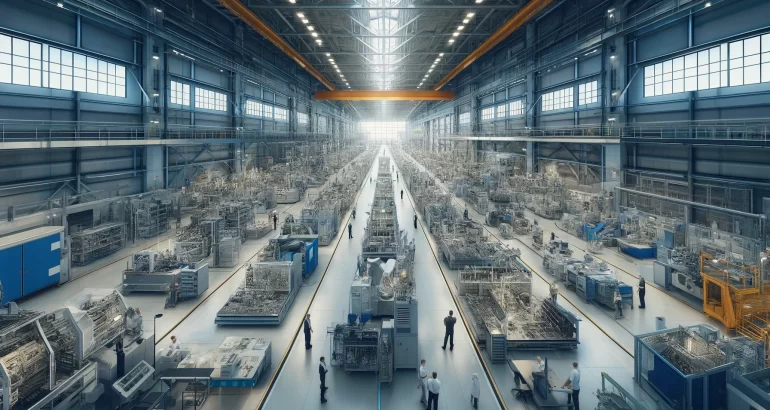Explore the critical aspects of aircraft maintenance parts in Europe with a comprehensive guide on choosing the right suppliers, benefits of genuine OEM parts, and the latest industry trends. Learn about navigating regulations, technological innovations in distribution, and sustainability practices in the aerospace sector. Perfect for aviation professionals seeking in-depth insights and reliable information on European aircraft maintenance parts.
Introduction
The aviation industry is a complex, dynamic field where safety and efficiency are paramount. Ensuring the reliability of aircraft maintenance parts is not just a regulatory requirement but a critical component of operational success. European markets, known for their stringent standards and high-quality manufacturing, play a pivotal role in the global distribution of aircraft parts. This article aims to delve into the intricate world of aircraft maintenance parts in Europe, providing insights into the selection of suppliers, the benefits of genuine OEM parts, and the latest trends affecting the industry. Here, we explore topics often overlooked, offering a fresh perspective to enhance understanding and decision-making for aviation professionals.
The Importance of Choosing the Right Aircraft Maintenance Parts

Understanding the Landscape of Aviation Components Trading
The European aviation component market is an interconnected ecosystem involving manufacturers, suppliers, regulators, and end-users. It’s a sector marked by its rigorous adherence to quality and safety standards, often setting benchmarks globally. Europe’s strategic position in the global market is bolstered by its advanced manufacturing capabilities and robust regulatory frameworks, which ensure that only the highest quality parts circulate in the market. As a hub for aviation, Europe is not just a market for parts distribution but also a centre for innovation in aerospace technology.
Key Factors in Selecting Aircraft Spare Parts Suppliers
Selecting the right supplier is crucial. Factors such as supplier certification, production standards, and historical reliability are key considerations. European suppliers often hold certifications like EASA Part 21 and ISO 9001, which assure compliance with international standards. Buyers should prioritize suppliers who demonstrate transparency in their sourcing and a commitment to quality. Additionally, long-term relationships with suppliers can lead to improved service and supply chain reliability, which is vital in an industry where every second of downtime counts.
FAQs
- What certifications should I look for in a European aircraft parts supplier?
- Look for suppliers with EASA Part 21, ISO 9001, or similar certifications. These indicate adherence to rigorous safety and quality standards crucial in the aviation industry.
- Why is supplier transparency important when choosing aircraft spare parts?
- Transparency ensures the parts are sourced ethically and meet the required specifications. It also helps in verifying the supply chain, reducing the risk of counterfeit parts entering the system.
- How does building a long-term relationship with suppliers benefit aircraft maintenance operations?
- Long-term relationships can lead to better pricing, higher quality service, and more reliable supply chain logistics, all of which contribute to smoother and more efficient maintenance operations.
Insight into Genuine OEM Aircraft, Parts

Benefits of Genuine OEM Parts Over Aftermarket Alternatives
Genuine OEM (Original Equipment Manufacturer) parts are often preferred in the aviation industry due to their guaranteed compatibility and reliability. These parts are manufactured to meet specific aircraft specifications and undergo rigorous testing. Using OEM parts reduces the risk of malfunctions and downtime, thus enhancing aircraft safety and operational efficiency. In Europe, where safety standards are non-negotiable, OEM parts are particularly valued for maintaining the integrity of aircraft maintenance.
Navigating the Aviation Spare Parts Marketplace
The marketplace for aviation spare parts is vast and can be daunting to navigate. In Europe, digital platforms and specialized trade shows are often used to connect buyers with reputable suppliers. Leveraging networks and participating in aviation supply chain events can provide opportunities to meet directly with manufacturers and service providers, ensuring a deeper understanding of the products and fostering better procurement decisions.
FAQs
- What are the primary advantages of using genuine OEM parts in aircraft maintenance?
- Genuine OEM parts guarantee compatibility, optimal performance, and compliance with safety regulations, reducing the likelihood of equipment failures and maintenance issues.
- How can one verify the authenticity of OEM parts?
- Authenticity can be verified through part numbers, certification documents, and purchasing directly from authorized dealers or manufacturers.
- What resources are available for navigating the aviation spare parts marketplace in Europe?
- Online platforms specific to aviation parts, trade shows, and industry networking events are excellent resources for connecting with reputable suppliers and manufacturers.
Trends and Innovations in Aircraft Parts Distribution

Technological Advancements Impacting Distribution
Recent advancements such as AI, machine learning, and blockchain technology are revolutionizing the distribution of aircraft parts. These technologies offer improved tracking, predictive analytics for maintenance, and more transparent supply chains. European companies are at the forefront of implementing these technologies, seeking to reduce inefficiencies and enhance the security of logistic operations.
Sustainability Practices in Aerospace Components
Sustainability is increasingly becoming a focus in the aerospace industry. European manufacturers are leading the way in integrating eco-friendly practices into the production and distribution of aircraft parts. This includes using recycled materials, optimizing manufacturing processes to reduce waste, and designing parts that are more energy-efficient. These practices not only meet regulatory requirements but also cater to the growing demand for sustainable operations from consumers and businesses alike.
FAQs
- What role does AI play in aircraft parts distribution?
- AI helps in predictive maintenance, inventory management, and optimizing logistics, making the distribution process more efficient and less prone to errors.
- How does blockchain technology improve aircraft parts distribution?
- Blockchain introduces transparency and security in the supply chain, providing immutable records of part provenance and transactions, which helps in combating counterfeit parts.
- What are some examples of sustainability practices in aerospace components production?
- Using recycled materials, reducing production waste, and implementing energy-saving manufacturing processes are key sustainability practices being adopted by leading European aerospace companies.
Challenges Facing Aircraft Spare Parts Logistics in Europe

Regulatory Hurdles and Compliance Issues
Navigating the complex regulatory environment in Europe can be challenging. Compliance with EU regulations and standards requires a thorough understanding of both local and international law. Regulatory hurdles can affect the speed at which parts are delivered and impact the overall efficiency of supply chains. Companies must stay well-informed of changes in legislation to avoid disruptions and maintain compliance.
Impact of Economic and Political Factors on Availability
The availability of aircraft parts can be significantly influenced by economic and political stability. Issues such as Brexit have introduced new customs regulations and trade barriers, affecting how parts are imported and exported across borders. Economic downturns can also impact the production capacities of manufacturers, leading to shortages and increased prices. Staying ahead of these changes and planning for contingencies is crucial for maintaining a steady supply chain.

Conclusion
The aircraft maintenance parts industry in Europe is characterized by its high standards and innovative approaches to supply chain management and part distribution. For aviation professionals and companies, understanding the nuances of this market is crucial. By choosing the right suppliers, investing in genuine OEM parts, and staying abreast of the latest trends and regulatory changes, stakeholders can ensure the highest levels of efficiency
and safety in their operations. As the industry evolves, those who adapt swiftly and strategically will continue to thrive in this competitive landscape.
Links
- European Union Aviation Safety Agency (EASA) – Part 21 Regulations
- ISO – International Organization for Standardization (ISO 9001 Quality Management)
- Aviation Week Network – Events and Trade Shows
- Aerospace Technology – Latest Innovations in Aerospace
- Sustainable Aviation – Industry Initiatives and Practices
